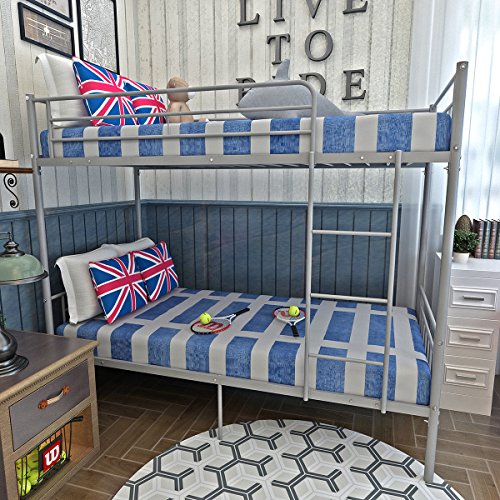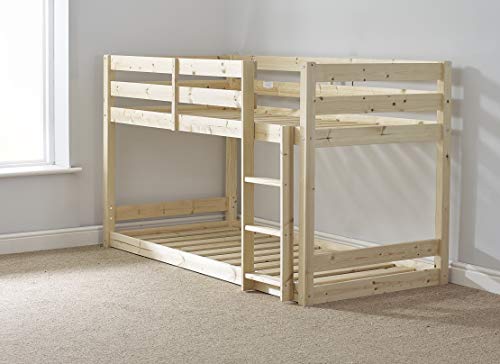 Where is the Best Place to Buy bunk Bed Bunk Beds?
Where is the Best Place to Buy bunk Bed Bunk Beds?Bunk beds are a great option for kids' rooms. They also make a great choice for cabins, vacation homes and Airbnbs.
 Choose from twin over twin or full over twin options, which include ladders or leaning ladder as well as a the stairs. Staircase bunks are available with storage space or a trundle to accommodate sleepovers.
Choose from twin over twin or full over twin options, which include ladders or leaning ladder as well as a the stairs. Staircase bunks are available with storage space or a trundle to accommodate sleepovers.Size
Bunk beds are available in a variety of sizes to accommodate different sleeping needs and bedroom layouts. When weighing the options for size it is important to think about the space in your home and the people who will be sleeping on the bunk bed. Children younger than six years old age shouldn't be sleeping on the top bunk. Additionally the weight limit for the top bunk should be reviewed to ensure that the mattress is within the right weight range. Top bunk mattresses are usually no thicker than 6 inches to avoid the danger of a child falling out of a bunk bed.
If you're looking to maximize sleeping space, a twin over full bunk bed can allow two kids to share a room and will provide plenty of space on the floor for books, toys and other bedroom essentials. A twin over full loft bed over a queen- or King-sized bed is an excellent option for bedrooms with high ceilings. These beds let you add extra storage with built in shelves or drawers.
It can be difficult to decide which bunk bed would work best for your home, there are so many options to choose from. Consider all the features that bunk beds offer, such as guardrail's height, ladder or slide angles and design styles such as cottage/coastal farmhouse, farmhouse, log Barnwood, or modern industrial. Take into consideration the unique features a bunk bed can offer, such as the tent top or fort area.
Some bunk beds have an trundle that can be lifted out from underneath the bunk on the bottom to create another sleeping arrangement. This is a great option for older children who wish to invite guests stay over for sleepovers or parents who need extra sleeping accommodations when visiting family. It is essential to examine the materials used to construct the frame and mattress for each model when shopping for a new bunk bed in order to ensure they are durable and safe. Additionally there are bunk bed frames that are made of eco-friendly materials or GreenGuard Gold certified, making them an environmentally responsible choice for a bedroom addition.
Style
Bunk beds are a chic, functional addition to any space, turning smaller rooms into spacious bedroom play spaces. They're often used in guest houses, boarding schools and vacation cabins but can also be found in many residential homes to maximize space and add a sense of charm and adventure. There are many different types of bunk beds to pick from. It is important to choose one that complements your home's style as well as the preferences of your children.
The durability and aesthetics of wooden bunk beds makes them a popular choice. These beds are ideal for a modern or traditional room. They are available in a variety of configurations that include twin over twin or queen over queen as well as full over twin. Metal bunk beds are an excellent option for modern-day style. They are sturdy and durable. Metal bunks are typically found in youth, teen and adult camps due to their versatility and affordability however, they can be an attractive choice for a bedroom at home.
When choosing a bunkbed the safety aspect is an additional factor. You'll need to make sure that the height of the upper bunk bed is not too high to ensure that children are able to safely climb in and out. You'll also want to ensure that the bunk is positioned away from any ceiling fans, which can be a hazard for younger children.
Other security features include guard rails that run along the side of the top bunk, and stairs or a ladder that leads to the top bunk. You'll need to ensure that the frame can stand up to children jumping over and off it, and also any adults who might use it.
If you're seeking an easier to use bunk bed solution, consider using a loft bed that lets floor space under the beds, which can be used to store furniture or storage. There are full-over-futon or corner lofts that combine two elevated beds in the corner of a room which makes them perfect for small spaces. Some of these beds also feature a built-in desk or trundle, allowing you to accommodate guests as well as sleepovers.
Materials
It is important to understand that bunk beds are available in various designs and styles. Some are sleek and simple, while others have storage spaces. Bunk beds come in a variety of materials including steel and wood. While both options have pros and cons however, it's the responsibility of the buyer to choose what kind of bunk bed is best suited to their home.
It's important to use quality materials for your new bunk beds regardless of their type. This will ensure their safety and longevity. Bunk beds made from flimsy materials can become unstable and dangerous. Be sure to carefully consider your options before purchasing a bed.
Bunk beds are made from different materials, however they're most commonly made of wood or metal. They can be built with stairs or ladders that allow you to climb to the top bunk and they may have additional features such as trundles or drawers. Some bunk beds are designed to resemble specific things, such as boats or small homes.
When you are choosing a bunk bed, it's essential to remember that your child will eventually grow out of it. When that time comes it's best to choose a bed that can be transformed into two separate beds. This way, you won't have to invest in a completely new set of furniture if your children outgrow the bunk bed.
A bunk bed that is disassembled has the added benefit that the fittings and pipe used in its construction could be used to create other projects such as shelves or desktop frames. This means that your kids' bunk bed will not be an eye-sore in their bedroom after they have outgrown it.
One excellent example of a bunk bed that can be transformed into two separate beds is this free design from Ana White. The bed is constructed primarily out of wood, while the ladder and safety railing are built using fittings and pipes. The creator used Single Socket Flange 90 Degree Elbow and Flange fittings for this design.
Safety
Bunk beds are a popular option for kids' rooms, however they can be dangerous if do not take the necessary precautions. Make sure the bunk bed you select meets all British safety standards. This includes sturdy guardrails, and an appropriate ladder that isn't too low or slack. It's also crucial that your children understand how to use safely their bunk beds, particularly when you plan to let them play on the upper level. Remind them not to jump on the bed or play around it and also remind that they shouldn't sit on chairs or other furniture to climb up to the top of the bed.
When it comes time to set up your child's bunk bed, it is ideal to place them in the corner of a room so they have walls on two sides. This will minimize the chance of falling off the bunk or onto the side. It's also recommended to lay a carpet under your kids' bunk beds to aid in reducing any falls they might have and decrease the risk of them getting injured.
It's also recommended to keep the bunk bed free from things that could pose risk, such as curtains (particularly their cords), ceiling fans, windows and lights. You should also teach your children how to climb the ladder properly and not climb up onto it without using the safety rails.
It is important to go over the directions for assembling your bunk bed. They will often give additional details on how to use it. It is also important to avoid placing the beds in a room where children are running around because this could cause distractions and increase the chance of accidents. Put your bunk bed together in the garage or in another large space. Make sure you have the right tools before beginning. This will also help you identify any potential issues such as a broken screw, before they become a major danger to your safety.
